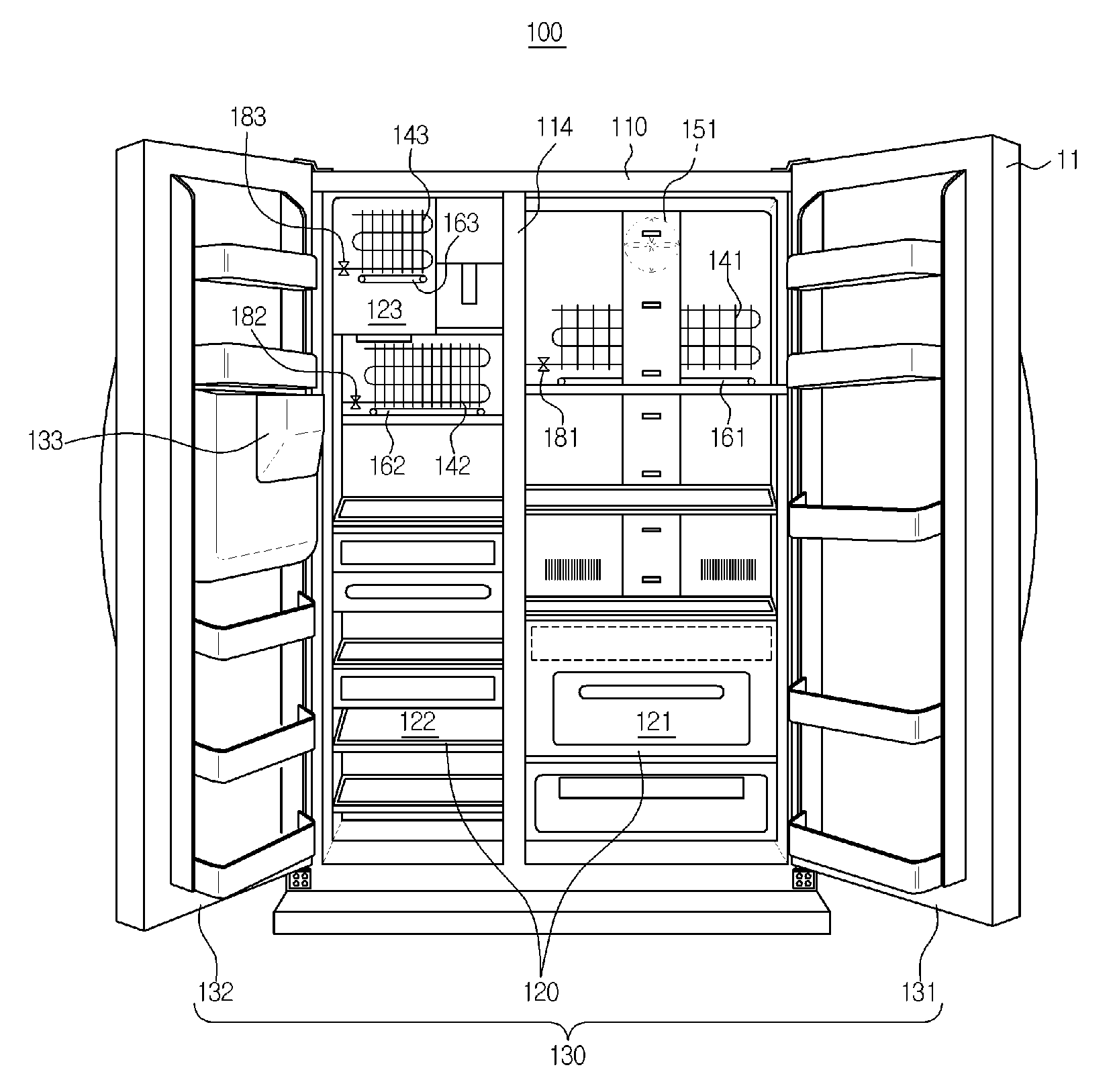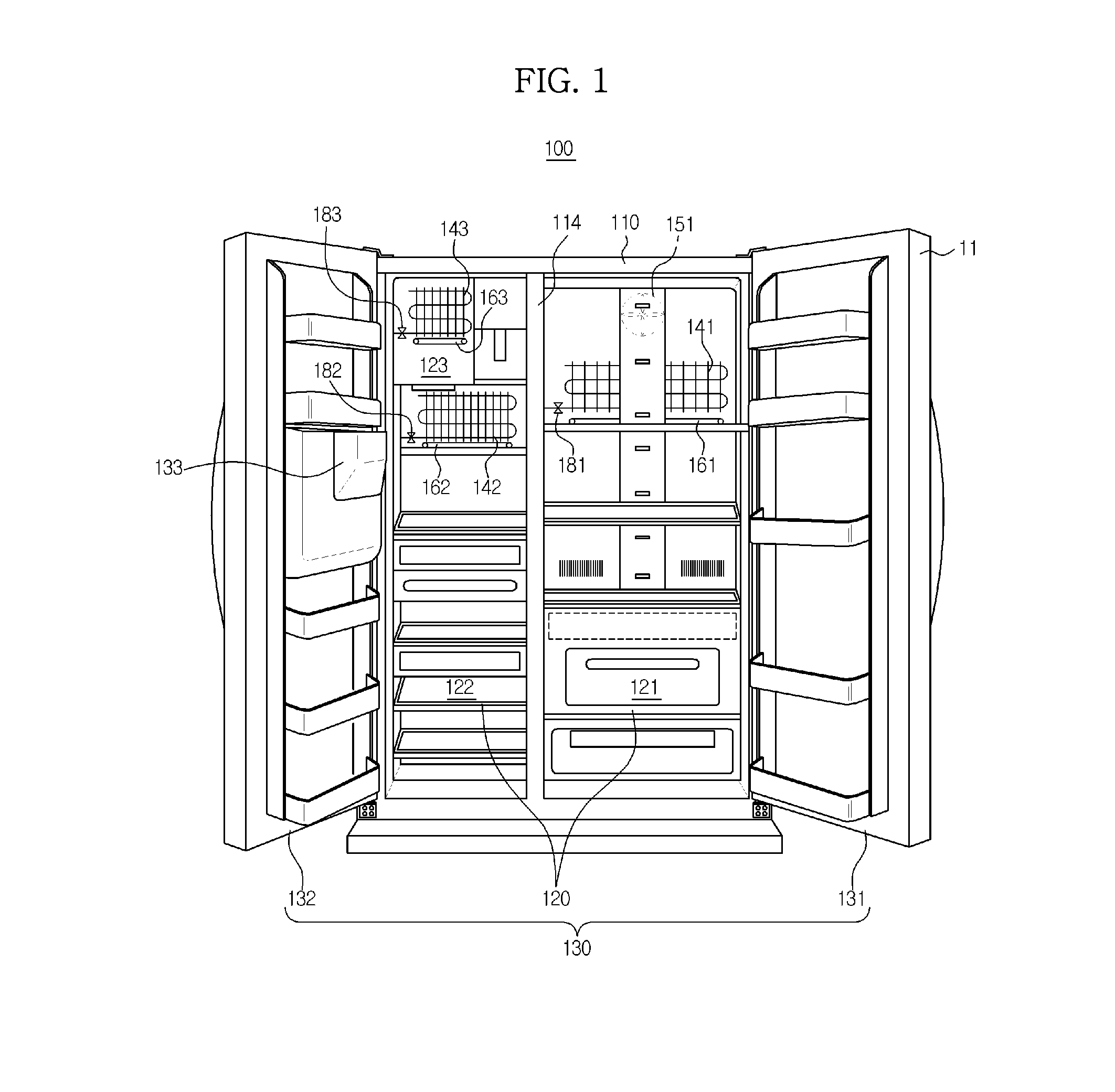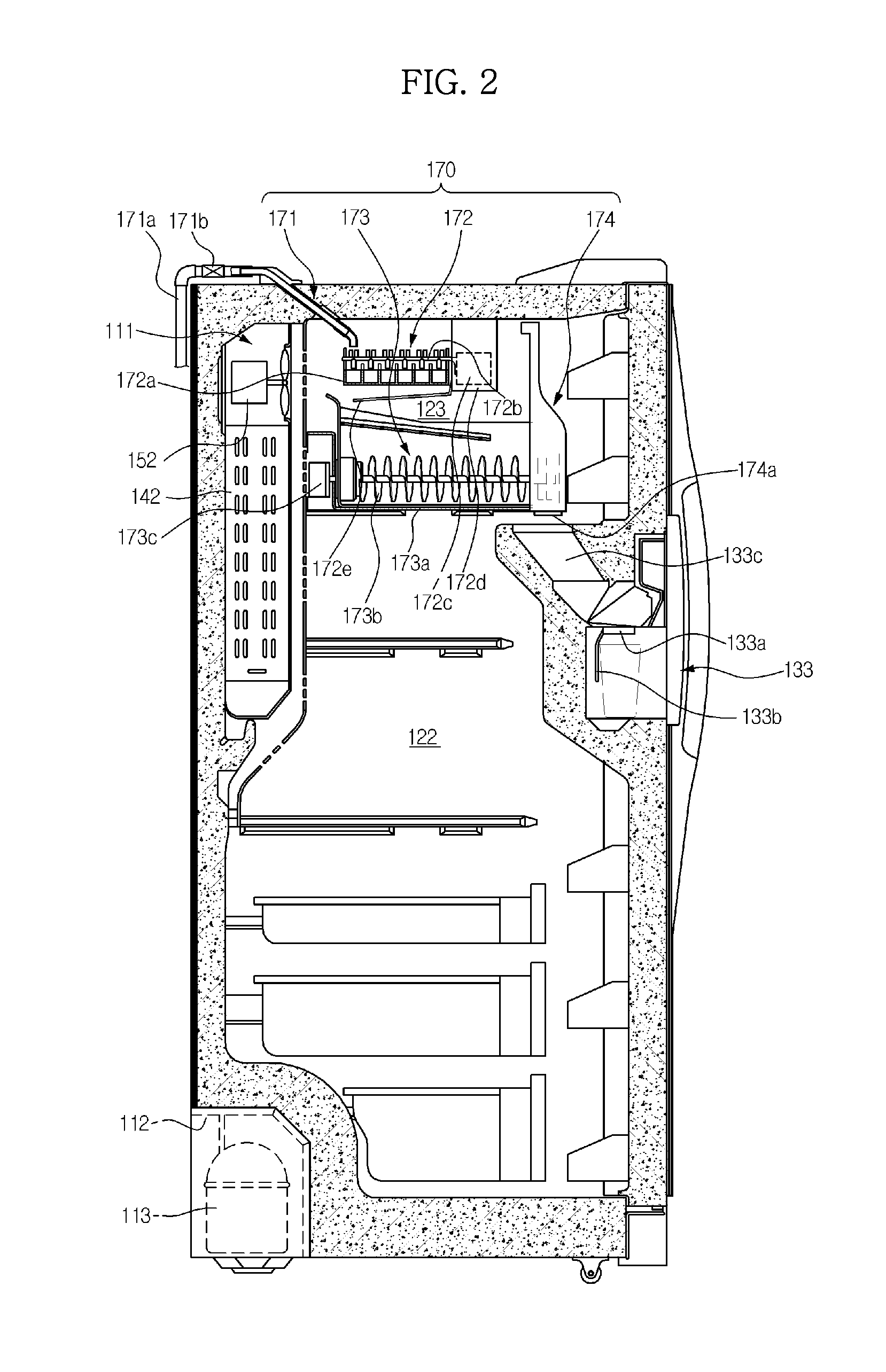Refrigerator and control method thereof
a technology of refrigerators and control methods, applied in the field of refrigerators, can solve the problems of increased construction costs, increased maintenance costs, and increased power consumption, and achieve the effect of preventing concentration of power consumption
- Summary
- Abstract
- Description
- Claims
- Application Information
AI Technical Summary
Benefits of technology
Problems solved by technology
Method used
Image
Examples
Embodiment Construction
[0045]Reference will now be made in detail to the embodiments of the present disclosure, examples of which are illustrated in the accompanying drawings, wherein like reference numerals refer to like elements throughout.
[0046]FIG. 1 is a perspective view of a refrigerator according to an embodiment of the present disclosure, and FIG. 2 is a view illustrating the interior of the refrigerator according to the embodiment of the present disclosure.
[0047]As shown in FIG. 1, a refrigerator 100 includes a main body 110, storage compartments 120 (121 and 122), and doors 130 (131 and 132).
[0048]The main body 110 forms the external appearance of the refrigerator 100. A duct 111, along which air flows, and a machinery compartment 112 are formed in an inner space of the main body 110.
[0049]In the machinery compartment 112 are mounted a compressor 113 to compress a refrigerant so that the refrigerant is discharged in a high-temperature and high-pressure state, a condenser (not shown) to condense ...
PUM
 Login to View More
Login to View More Abstract
Description
Claims
Application Information
 Login to View More
Login to View More - R&D
- Intellectual Property
- Life Sciences
- Materials
- Tech Scout
- Unparalleled Data Quality
- Higher Quality Content
- 60% Fewer Hallucinations
Browse by: Latest US Patents, China's latest patents, Technical Efficacy Thesaurus, Application Domain, Technology Topic, Popular Technical Reports.
© 2025 PatSnap. All rights reserved.Legal|Privacy policy|Modern Slavery Act Transparency Statement|Sitemap|About US| Contact US: help@patsnap.com



